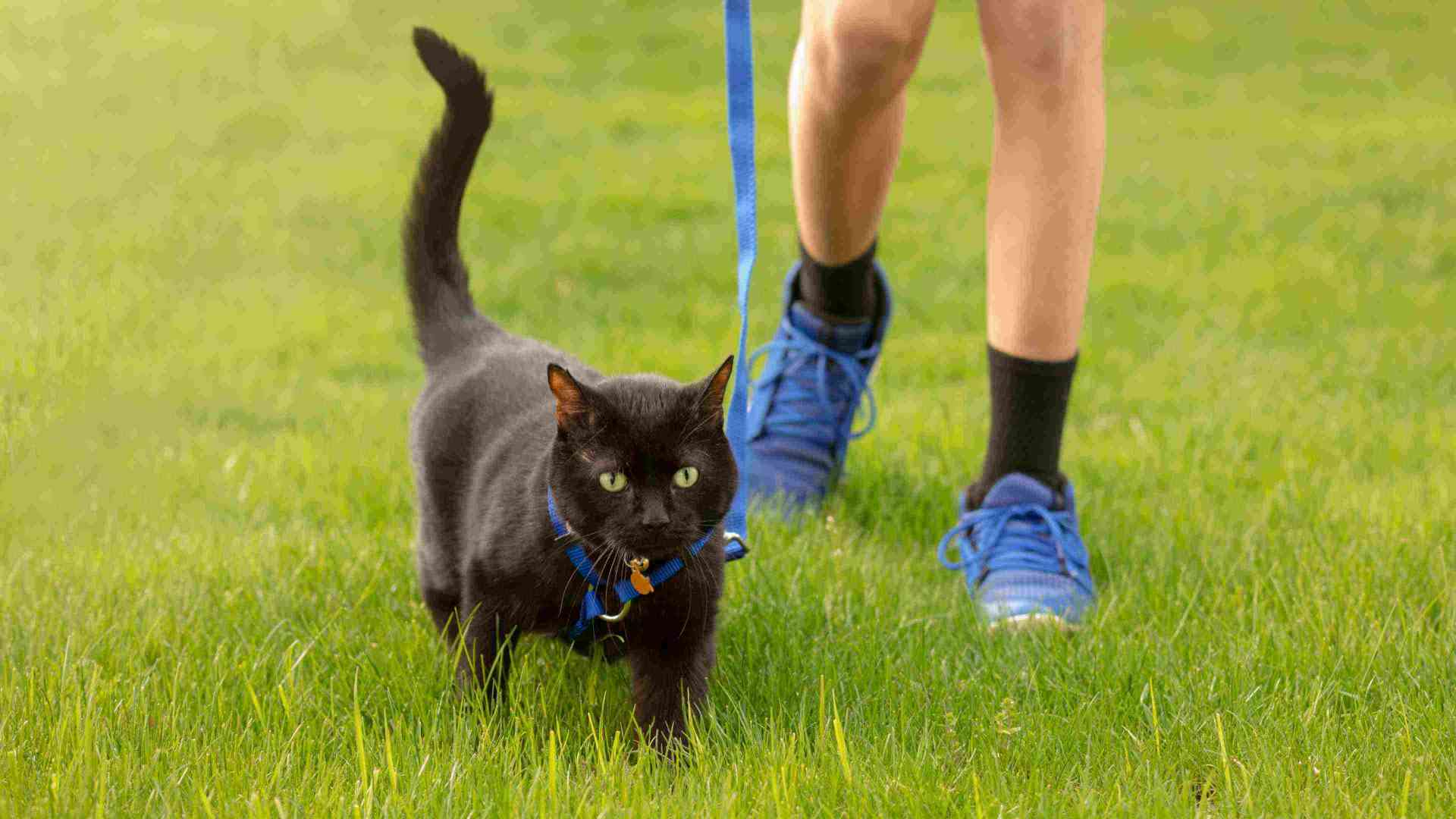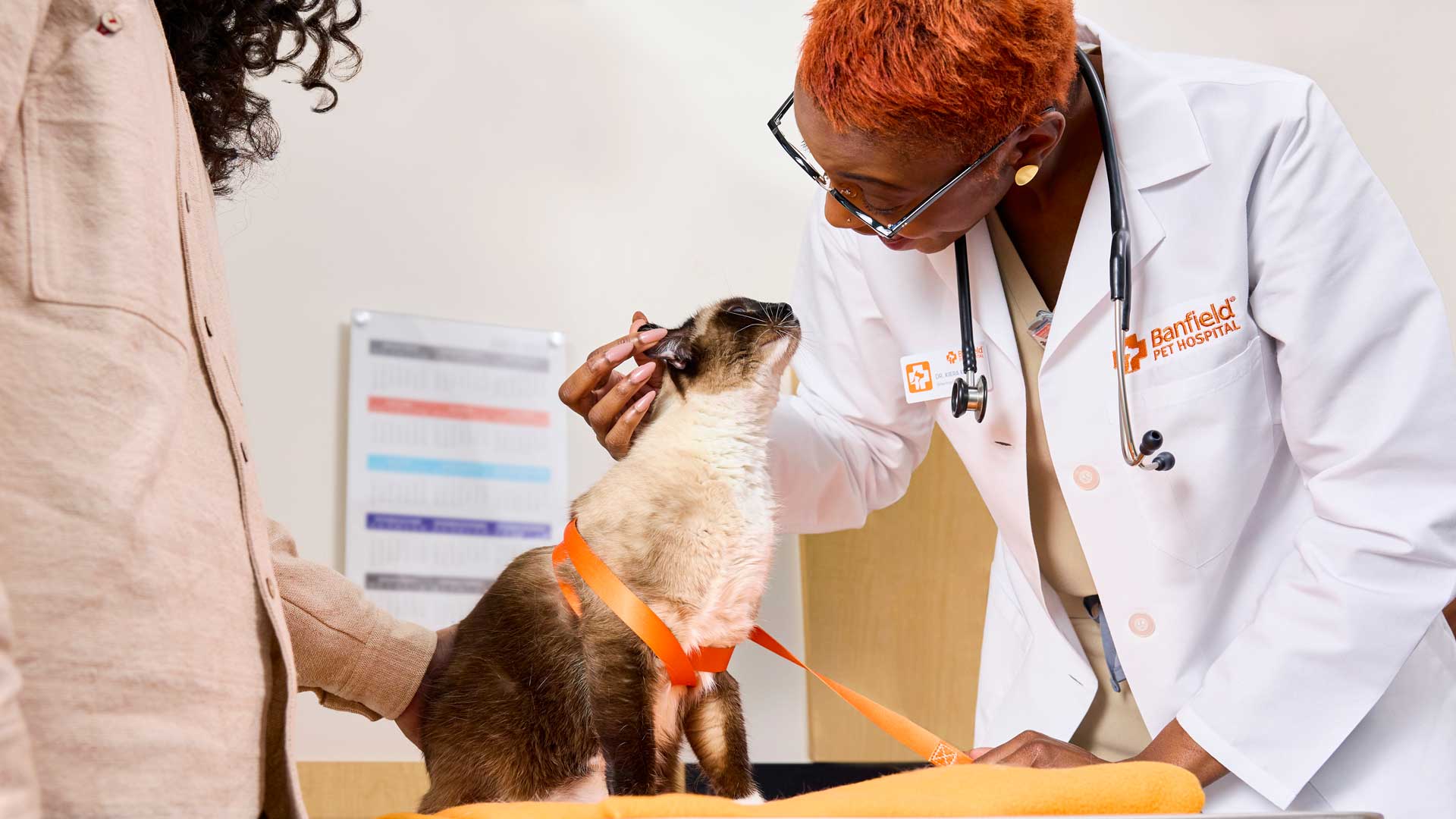down the catwalk: taking your indoor cat outside
If your cat is a pillow-sleeping, window-basking, indoor enthusiast, that’s great! Indoor life is the cat’s pajamas, dramatically decreasing your kitty’s risk of disease and injury. Some people can’t help but wonder, however, if their feline’s life could be enriched by a little fresh-air adventuring. Here’s the quick answer: if done safely, the experience can be fun for both cats and owners.
Like humans, cats can experience boredom, which can result in some not-so-great behavior (oh, the stories your upholstered armchair could tell). Stimulating cats via regular play is vital to their well-being. But, as any owner knows, fickle felines love a toy one second and turn their nose up at it the next. When Fluffy’s not feeling it, it can feel like you’ve run out of alternatives. The allure of the great outdoors is clear: new textures, smells, and experiences can stimulate your cat in new ways.
Gear up
As with any great adventurer, your intrepid fuzzball is going to need gear before you embark. As in a leash. Yep, seriously. A leash for your cat. We may think of our cats as independent hunters, but outdoors, cats aren’t always the biggest or baddest thing around. Dogs, traffic, and other animals can make outdoor activity a little unpredictable. A leash and a harness specifically designed for cats will help you stay in control of the situation. After all, the fire department has better things to do than breaking out the extra-tall ladder because the neighbor’s corgi got a little too friendly.
Leash-training your cat is the most important step to beginning your outdoor adventure, and again, a harness is a must. It should not surprise you that few cats will be psyched to wear a harness initially. They may even refuse to be captured long enough to be suited up. But, contrary to popular belief, cats can be trained! There are many guides to leash-training your cat and most focus on a steady path of positive reinforcement (leash = treats). For more information, and to run your regimen by a professional, get in touch with your Banfield veterinary team to make sure you’re training your cat safely and effectively. It will be obvious if and when your cat is feeling safe and confident. Listen to your adventuring partner and don’t rush it.
Go for it
Training alone can stimulate and enrich your cat, but let’s not forget why you’ve been doing it all. When it’s finally time to leave base camp, go slow. Cats have a confident attitude but take much longer to adapt to new experiences than dogs. Start with a short journey onto the porch and always keep an eye on your kitty to make sure they’re having a good time. Eventually, with time, excursions can become longer and more areas can be explored. Bugs will be chased. Sunlight will be soaked in. Soon, you two will be forging new paths into the great unknown, or at least into the greater front lawn.
As in any good adventuring partnership, professional advice, the right prep, and open communication will set you both on the road to success. Just remember, however, when your formerly sedentary kitty is circling the door, yowling loudly for another adventure: you asked for it.
 Mites and mange
Mites and mange Podcast - Not Just Fluff
Podcast - Not Just Fluff











